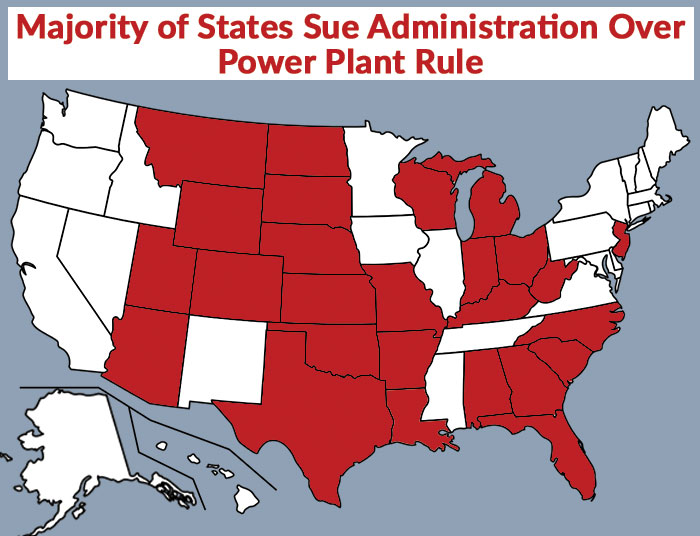Avalanche of Opposition Hits EPA’s CO2 Rule
-
President Obama’s new rule governing carbon dioxide emissions from power plants will burden an already struggling American economy.
-
The administration published the rule last Friday, opening the door for a legal and legislative fight.
-
Twenty-six states filed lawsuits to block the rule in court. Senators McConnell and Capito will file legislation to block the rule in the Senate.
Last Friday, the Obama administration formally published its rule governing carbon dioxide emissions from power plants in the Federal Register. The rule violates federal law and will raise energy prices, threaten electric reliability, eliminate jobs, and destroy economic growth – all for little environmental benefit. Twenty-six states immediately filed lawsuits to block the rule in federal court. Senators will file bipartisan resolutions of disapproval to block the rule on the Senate floor.

A Legal Avalanche Against the Rule
Following last week’s publication of the rule in the Federal Register, opponents have 60 days to file challenges in federal court. Those challenges have already begun, and at least 17 petitions for review have already been filed. A coalition of 24 states led by West Virginia filed a lawsuit against the rule in the U.S. Court of Appeals for the D.C. Circuit. They argued, “EPA has vastly overstepped its authority by seeking to pick winners and losers in the energy field, and then requiring the States to take part in this unlawful regime.” Separately, Oklahoma and North Dakota filed their own lawsuits against the rule in the D.C. Circuit. An industry coalition led by the U.S. Chamber of Commerce also has asked the court to review the rule. Petitioners have asked the court to issue a stay against the rule. The Obama administration clearly hopes that if states and businesses have to start complying with the law while the suits proceed, EPA will have gotten its desired result even if it ultimately loses in court.
Slamming the Brakes on America’s Economy
The rule requires states to reduce carbon dioxide emissions from power plants by 32 percent below 2005 levels over the next 15 years. It cuts coal, which today provides about 39 percent of the country’s electricity. It relies heavily on renewables, which only provide 5 percent of energy today despite significant investments by federal and state taxpayers. It eliminates the move toward natural gas that has supported a manufacturing renaissance and created thousands of new jobs across the country.
“We know that low-income minority communities would be hardest hit” by higher electricity prices generated by the rule.
--EPA Administrator Gina McCarthy, August 11, 2015
The EPA estimates that the rule will cost the American economy $8.4 billion per year. The American Action Forum predicts that the rule will eliminate 125,800 jobs across the country.
The Senate Is Pushing Back
If Democrats have their way, this rule is just the beginning. Other emissions reductions will follow – from transportation, manufacturing, buildings, and agriculture. The Obama administration will not stop at coal and oil either. It will soon target natural gas. In fact, the administration has already signaled its preference to sideline natural gas. “In the final rule, that early rush to gas is eliminated,” a White House background fact sheet stated.
The Senate is not waiting for the courts to stop this destructive and politically motivated rule. This week, Senators McConnell, Manchin, Capito, and Heitkamp will file bipartisan resolutions of disapproval under the Congressional Review Act to block the EPA’s rule.
If the Senate and House pass these resolutions, and if the president signs them into law, the EPA’s rule will not take effect and cannot be issued in “substantially the same form” as the disapproved rule. Additionally, on August 5, the Environment and Public Works Committee passed S. 1324, the Affordable Reliable Energy Now Act. This bipartisan legislation, introduced by Senators Capito and Manchin, strikes the rule and sends the EPA back to the drawing board. The legislation would also exempt states that determine the rule would harm electric rates, electric reliability, or economic growth.
Next Article Previous Article
